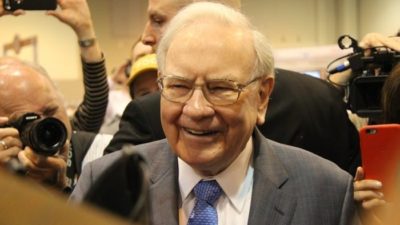This article was originally published on Fool.com. All figures quoted in US dollars unless otherwise stated.
Back in 2013, Facebook (NASDAQ: FB) reportedly tried to buy Snap (NYSE: SNAP) for $3 billion. Snap CEO Evan Spiegel rejected Facebook's offer, and the company is worth roughly $120 billion today.
Snap is still much smaller than Facebook, which recently became a trillion-dollar company. But if Snap continues to grow, could it eventually match -- or even surpass -- Facebook's market cap by 2030?
Where will Snap be in 10 years?
During Snap's investor event earlier this year, it predicted its revenue would grow about 50% annually over the next few years. The company expects the expansion of its self-service ads, a growing mix of higher-value video ads, new augmented reality (AR) lenses and in-app games, and its evolution into a camera-based "social shopping" platform to drive that growth.
Snap is also testing out "Minis," which are mini programs integrated into its app. This walled-garden strategy, which mirrors Tencent's Mini Programs on WeChat, could eventually enable Snapchat's users to order food, buy products, make payments, and more without ever leaving the app. This isn't a surprising move, since Tencent is one of Snap's biggest investors and WeChat's Mini Programs have been wildly successful in China.
Snap has also been testing an in-app currency, Snap Tokens, to monetize Snapchat's games. In the future, it could enable third-party developers to monetize their Minis with Tokens, or allow Spotlight's creators to monetize their TikTok-like videos with Token-based tips.
The company recently expanded Snap Map, its searchable map for user-submitted videos, with business recommendations -- which could pave the way toward more location-based services and make it a viable alternative to Alphabet's Google Maps. Lastly, Snap's Spectacles, which it continues to sell in limited batches, could give it a foothold in the nascent smart-glasses market.
All these moves suggest Snapchat could become a diversified all-in-one "super app" that will serve a much larger audience than its current user base of 293 million daily active users (DAUs) by 2030.
Where will Facebook be in 10 years?
Facebook hasn't provided any comparable long-term forecasts yet. But it will likely grow at a much slower rate than 50% over the next few years, and analysts expect its revenue to grow just 19% next year.
Facebook ended last quarter with 3.51 billion monthly active people across its entire family of apps -- which include its namesake platform, Messenger, Instagram, and WhatsApp. That's nearly half of the world's population, so Facebook's user growth will likely decelerate as it focuses on boosting its average revenues per user -- especially in its less profitable overseas markets -- to offset that slowdown.
In the near term, Facebook will likely focus on selling higher-value video ads, expanding its Audience Network across third-party websites and apps, and changing its targeted advertising methods to counter Apple's recent privacy changes in iOS and Google's planned ban on third-party cookies in Chrome.
It will also rely more heavily on Instagram, which is growing faster than its core platform and generally more popular with younger users. Like Snap, Facebook will transform Instagram into a social shopping platform with shoppable posts and streamlined check-out options.
Facebook's fledgling VR and AR businesses could take off over the next 10 years. It's already established a first-mover's advantage in the VR market with its Oculus headsets, and its upcoming smartglasses will likely be built on top of those software foundations. These devices could make Facebook's ecosystem even stickier, boost its hardware revenues, and reduce its overall dependence on its core advertising business.
But could Snap be worth more than Facebook by 2030?
Snap and Facebook could both become much larger by 2030, but basic math suggests it's highly unlikely the former will become more valuable than the latter.
If Snap grows its revenues 50% every year, its revenue would rise from $2.5 billion in 2020 to $145 billion in 2030. Assuming the stock still trades at about 30 times sales, Snap could be worth $4.35 trillion by then. But that's a rosy best-case scenario for Snap since it would be very difficult for any company to maintain an average revenue growth rate of 50% with a price-to-sales ratio of 30 for an entire decade.
If Facebook grows its revenues 20% every year, its revenue would rise from $86 billion in 2020 to $532 billion in 2030. If the stock still trades at about nine times sales, the company would be worth $4.79 trillion. That's a conservative outlook, since Facebook could easily generate 20% sales growth every year as it aggressively monetizes Instagram and expands its VR and AR ecosystems.
Snap could be nearly as valuable as Facebook by 2030 if everything goes right and investors continue to pay a premium for its growth, but Facebook merely needs to maintain its current course to stay ahead.
Yet that doesn't necessarily mean Facebook is the better investment, especially if Snap actually generates 50% growth annually over the next few years. Therefore, investors should focus on both companies' strengths and weaknesses instead of fretting over market caps to decide which is the better long-term investment.
This article was originally published on Fool.com. All figures quoted in US dollars unless otherwise stated.









